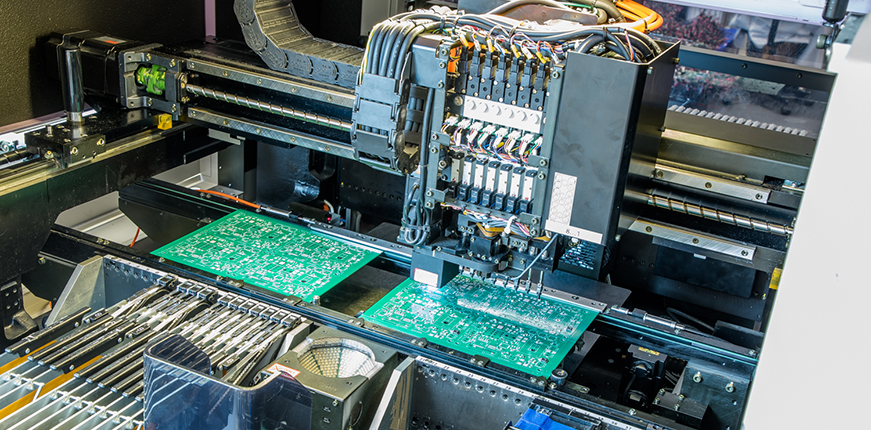* On your first PCB Assembly order!
* Up to $300 discount
 C - A L L E Y
C - A L L E Y 
Home | Events | PCB | About Us | News | Contact Us
Surface Mount Technology (SMT), also known as Surface-mount technology, is an electronic assembly method developed in the 1960s by IBM in the United States. This technology involves mounting electronic components such as resistors, capacitors, transistors, and integrated circuits on a printed circuit board and forming electrical connections through soldering. The components used in SMT are also known as surface-mount devices (SMD).
SMT offers several advantages in chip processing technology:
1. High reliability and strong anti-vibration ability
SMT chip processing uses chip components with high reliability and strong anti-vibration ability due to their small and light nature. Automated production ensures high mounting reliability, with the rate of bad solder joints being less than 10 parts per million. This is significantly better than the wave soldering technology used for through-hole plug-in components. Currently, almost 90% of electronic products rely on SMT technology.
2. Small size and high assembly density of electronic products
SMT chip components are only about 1/10 the volume and 10% of the weight of traditional plug-in components. Using SMT technology can reduce the volume of electronic products by 40% to 60% and the weight by 60% to 80%, resulting in a significant reduction in occupied area and weight. The assembly component grid has developed from 1.27mm to the current 0.63mm grid, and individual grids have reached 0.5mm. Through-hole mounting technology can achieve higher assembly density.

Difficulties And Solutions In SMT Patch Processing
3. Good high frequency characteristics and reliable performance
Firmly mounting chip components with leadless or short leads reduce the influence of parasitic inductance and capacitance, improving high-frequency characteristics and reducing electromagnetic and radio frequency interference. With SMT technology, the maximum frequency of the circuit designed with SMC and SMD can reach 3GHz, allowing its use in circuits with a clock frequency above 16MHz. Using MCM technology, the high-end clock frequency of the computer workstation can reach 100MHz, while reducing additional power consumption caused by parasitic reactance by 2-3 times.
4. Enhance productivity and achieve automated production
Currently, for fully automated assembly of perforated printed boards, it is necessary to increase the original board area by 40% to provide sufficient space for the automatic component insertion head to prevent damage. The automatic placement machine (SM421/SM411) uses a vacuum nozzle to pick and place components. The smaller size of the vacuum nozzle allows for higher component installation density, enabling the production of small components and fine-pitch QFP devices using automated assembly machines.
5. Cost Reduction
SMT technology reduces the required board area to 1/12 of through-hole technology and results in a significant area reduction when using CSP for installation. The reduced number of drilled holes in the circuit board decreases repair costs. Improved frequency characteristics lead to lower circuit debugging costs. The use of chip components reduces packaging, transportation, and storage costs due to their small size and light weight. Implementing SMT chip processing technology can lead to material, energy, equipment, manpower, and time savings, resulting in a cost reduction of 30% to 50%.
Why Choose China PCBA Supplier KSPCBA as Your SMT Patch Processing Manufacturer?
– Experienced and skilled team
– State-of-the-art equipment
– Strict quality control
– Excellent customer service
– Competitive price

Please send Email to kspcba@c-alley.com or call us through +86 13828766801 Or submit your inquiry by online form. Please fill out below form and attach your manufacturing files( PCB Gerber files and BOM List) if need quotation. We will contact you shortly.
 +86 13828766801
+86 13828766801 kspcba@c-alley.com
kspcba@c-alley.com https://www.kingshengpcba.com/
https://www.kingshengpcba.com/ 2/F, Building 6, Tangtou 3rd Industrial Zone, Tangtou Community, Shiyan Town, Baoan District, Shenzhen, China, 518108
2/F, Building 6, Tangtou 3rd Industrial Zone, Tangtou Community, Shiyan Town, Baoan District, Shenzhen, China, 518108